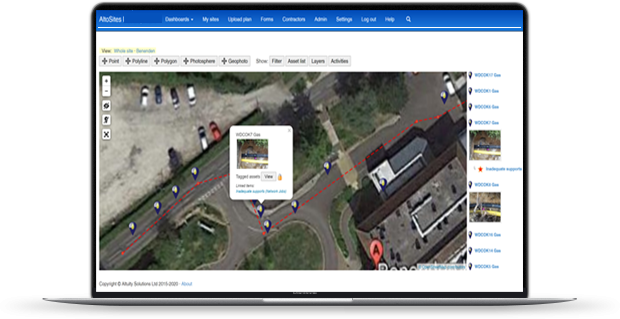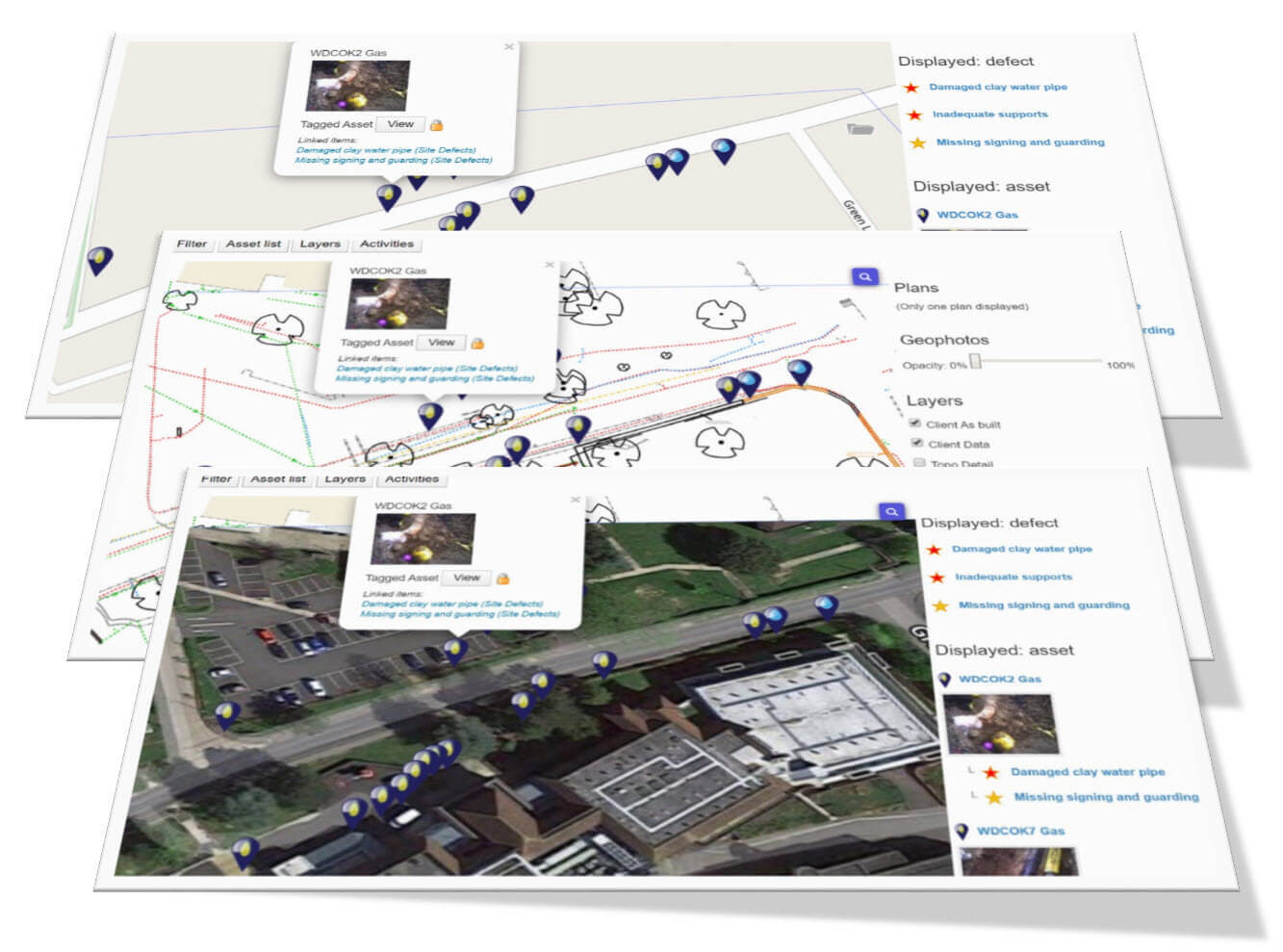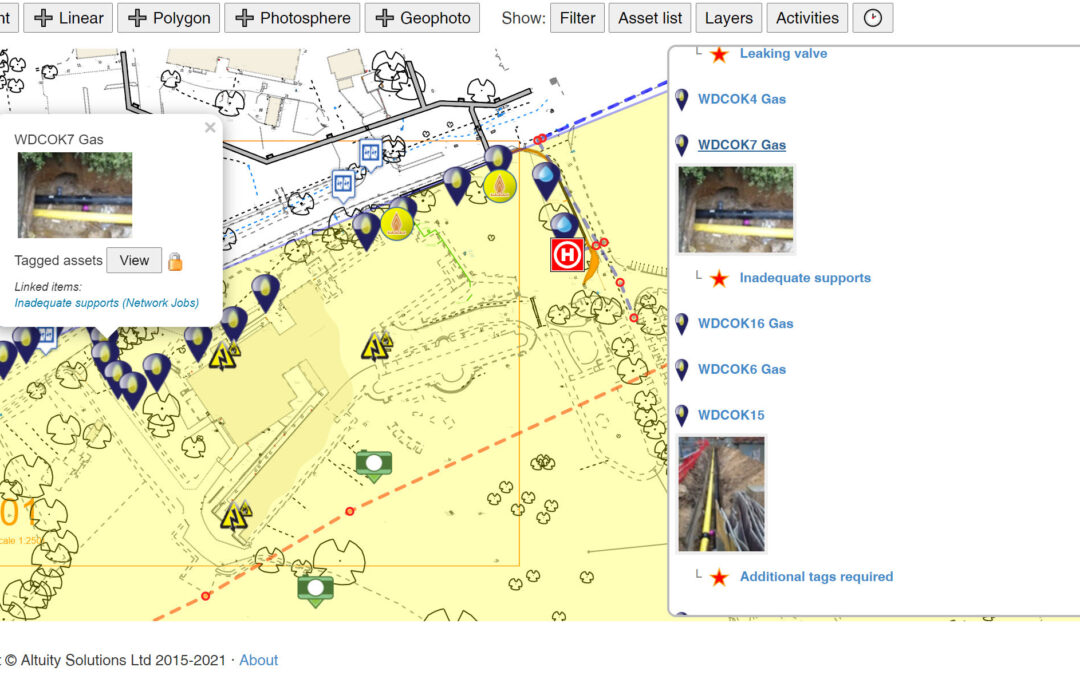The work of locating and recording utility services for facilities managers isn’t easy. Neither is information about buried services typically easy to access when and where recorded leading to frustration and added costs.
“It’s definitely there – you’re not looking properly.”
Said the owner of a gas mains to a contractor searching for the mains. They’d been searching for it in a business park so they could connect a new service.
After further investigative work and trial holes resulting in increased costs, delays and by now under pressure from their client over the delay who couldn’t understand the issue, they found it.
230m away from its indicated position on utility plans!
Imagine the cost and time savings if accurate ‘as built’ location records collected at the time of installation had been available.
Supplementary data about, in this instance, the main and above ground photographs for context would‘ve helped. Making this information accessible on-site as well as off-site is key.

And yet for many FMs these incredibly important assets remain out-of-sight and often out-of-mind until there’s a problem such as a leak or interruption to service such as damage to a fibre optic cable.
Buried utility services are notoriously hard to manage. Without an option to physically surface (daylight) them, many businesses are left with few choices on how to monitor their underground assets.
Unfortunately for us, it is these types of assets that are usually critical to the functioning of our facilities. Underground electrical cables, gas and water pipes all pose a danger to our safety if they are not maintained properly.
According to recent YouGov research only a third of UK businesses are prepared for issues with their buried assets (such as burst pipes and damaged cables) within the boundaries of their land.[1] Out of 1,000 UK companies surveyed around 1 in 5 of them had to pause business because of preventable water pipe damage.
Joint failures, accidental excavation strikes, subsurface disturbance – all of those can lead to costly consequences if not addressed timely. So, what are the options for you?
How to locate underground assets and buried utility services
Locating and recording utility services for facilities managers requires knowledge.
Knowledge is power.
This expression applies to most areas of life, and buried services is not an exception. Knowing the exact location of your underground assets, location of critical points such as joints, junctions, valves as well as being able to access this data quickly is critical for their effective management.
All this information has to be on hand for FMs to be able to carry out necessary maintenance work and develop risk mitigation strategies. But how do we combine different formats of underground and buried asset data.
Visualise your underground assets and utility services
An ideal solution for combining all of your linear assets, point assets, spatial and survey data into a neat, easily-manageable dataset is to visualise it. Layering the information onto a map based background makes it easier for an FM to locate and/or mark issues before they become too serious.
Geographical Information System (GIS) can be overly complex for operational FM use and too costly for everyday maintenance purposes, so instead a fit-for-purpose system would allow FMs to avoid these additional costs and complexity while still having an opportunity to transfer data to a GIS if the need arises.
3D models, which are now becoming more widely available as a deliverable from surveys, should also be easily accessible to the FM.
Underground asset and buried services data is then viewable on three layers. This can be in the office to help with pre-site planning or out in the estate across:
- Maps,
- Survey plans,
- Aerial imagery e.g. from drones.
The flexibility of this approach enables you to complement all of the above with additional information. For instance, 360° imagery could serve to further your understanding of utility services and aid with potential maintenance work. Accessibility on mobile devices in addition to the tried and trusted desktop view allows workers to perform any updates as effortlessly as possible.

We may not have x-ray vision or be able to predict damage before it actually happens, but we can take charge of how quickly we’re able to address it. Moving away from a reactive approach towards facility management can sure save a lot of money and grey hairs over time. It’ll certainly make the work of locating and recording utility services for facilities managers more efficient.
For more information read how AltoSUE helps tackle these challenges.
Sources:
[1] https://www.walesonline.co.uk/news/uk-news/businesses-unprepared-water-supply-problems-19716741

